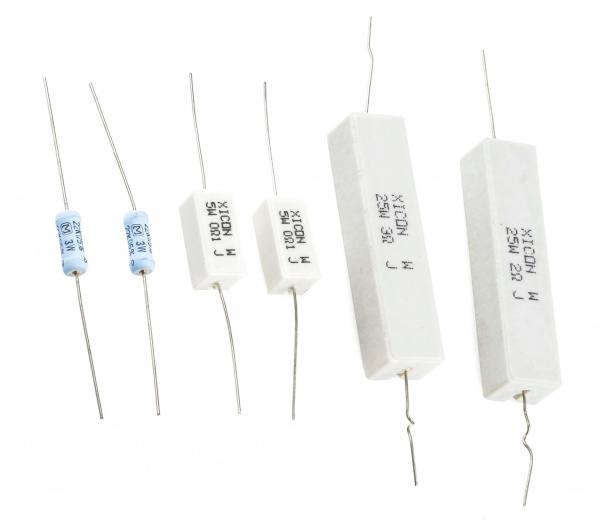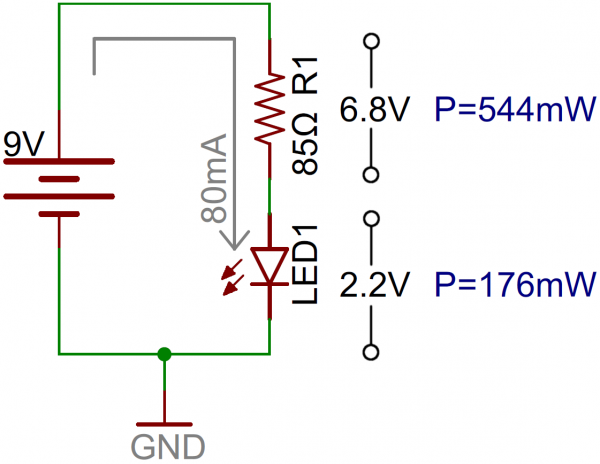Electric Power
Power Ratings
All electronic components transfer energy from one type to another. Some energy transfers are desired: LEDs emitting light, motors spinning, batteries charging. Other energy transfers are undesirable, but also unavoidable. These unwanted energy transfers are power losses, which usually show up in the form of heat. Too much power loss -- too much heat on a component -- can become very undesirable.
Even when energy transfers are the main goal of a component, there’ll still be losses to other forms of energy. LEDs and motors, for example, will still produce heat as a byproduct of their other energy transfers.
Most components have a rating for maximum power they can dissipate, and it’s important to keep them operating under that value. This’ll help you avoid what we lovingly refer to as “letting the magic smoke out”.
Resistor Power Ratings
Resistors are some of the more notorious culprits of power loss. When you drop some voltage across a resistor, you’re also going to induce current flow across it. More voltage, means more current, means more power.
Remember back to our first power-calculation example, where we found that if 9V were dropped across a 10Ω resistor, that resistor would dissipate 8.1W. 8.1 is a lot of watts for most resistors. Most resistors are rated for anywhere from ⅛W (0.125W) to ½W (0.5W). If you drop 8W across a standard ½W resistor, ready a fire extinguisher.
There are resistors built to handle large power drops. These are specifically called out as power resistors.
If you ever find yourself picking out a resistor value. Keep it’s power rating in mind as well. And, unless your goal is to heat something up (heating elements are basically really high-power resistors), try to minimize power loss in a resistor.
For Example
Resistor power ratings can come into play when you’re trying to decide on a value for an LED current-limiting resistor. Say, for example, you want to light up a 10mm super-bright red LED at maximum brightness, using a 9V battery.
That LED has a maximum forward current of 80mA, and a forward voltage of about 2.2V. So to deliver 80mA to the LED, you'd need an 85Ω resistor to do so.
6.8V dropped on the resistor, and 80mA running through it means 0.544W (6.8V*0.08A) of power lost on it. A half-watt resistor isn’t going to like that very much! It probably won't melt, but it'll get hot. Play it safe and move up to a 1W resistor (or save power and use a dedicated LED driver).
Resistors certainly aren't the only components where maximum power ratings must be considered. Any component with a resistive property to it is going to produce thermal power losses. Working with components that are commonly subjected to high power -- voltage regulators, diodes, amplifiers, and motor drivers, for example -- means paying extra special attention to power loss and thermal stress.



